Sketching at the Zoo
I mentioned on the previous page that I was sketching at the zoo. This is a new chapter in my sketching life.
In my retirement I work part time and don't have to take the subway every day, so I began to look for new subjects besides commuters.
Returning to urban sketching was a possibility, but I confess that I find sketching architecture tedious and time consuming, and not fun at all with my short attention span.
The only thing I really enjoy sketching is people.
Then it hit me that sketching animals might also be enjoyable, so I visited Ueno Zoo here in Tokyo.
From my old sketchbooks I saw that I had sketched once at Ueno Zoo 14 years earlier, but for some reason did not go back.
This time I was eager to take up the challenge, and my first zoo sketch was of a gorilla.
It was a pencil and watercolor sketch on a postcard and turned out to be a bit of a struggle.
But to my surprise, some high school students standing near me really liked that sketch.
That was all it took to get me hooked. I went back to the zoo the next week, and the week after that.
Then I discovered that Ueno Zoo sells an annual pass, and the cost was the equivalent of four visits.
After the first four visits, every subsequent visit is free, so I can afford to visit the zoo, sketch a few animals and then leave when I feel like it.
Then I can come back another day and do it all again.
Meeting People at the Zoo
My happy experience with students who praised my gorilla sketch turned out to be the norm; I got similar reactions from people every time I sketched.
So I started to give the sketches away if they were completed and ask the recipients to hold the sketch so I could I take a photo for my own record.
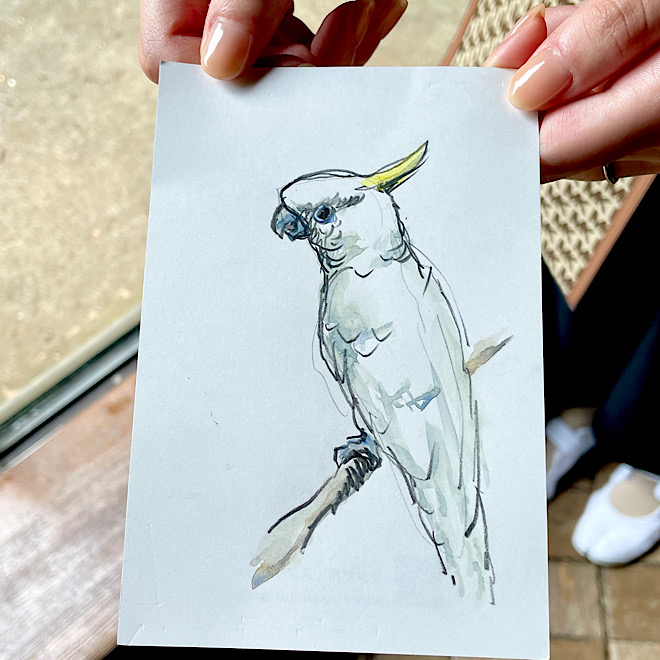
In Tokyo -- especially on the subway -- it is unheard of for people to talk to me or even make eye contact.
But I get into friendly conversations with strangers every time I sketch at the zoo.
People have actually applauded when I finished a sketch! That will never happen on a subway.
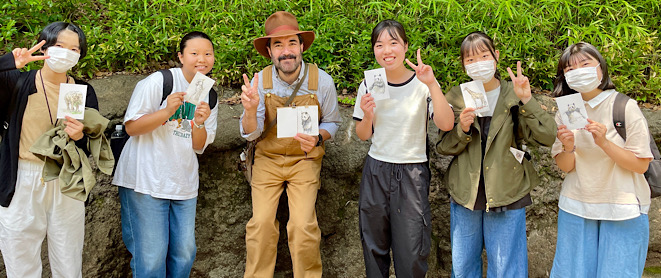
The atmosphere at the zoo is always very open and relaxed as people are there to have fun and look at animals.
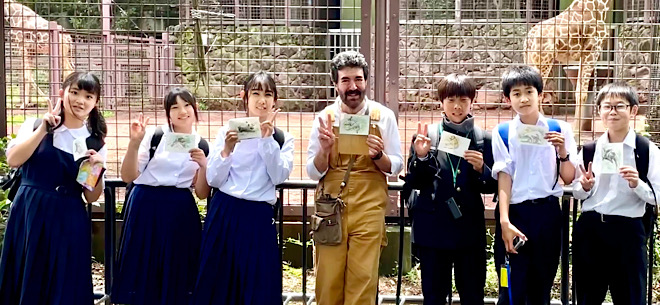
I particularly enjoyed interacting with young people from all over Japan who visit the zoo on their school trips and are curious.
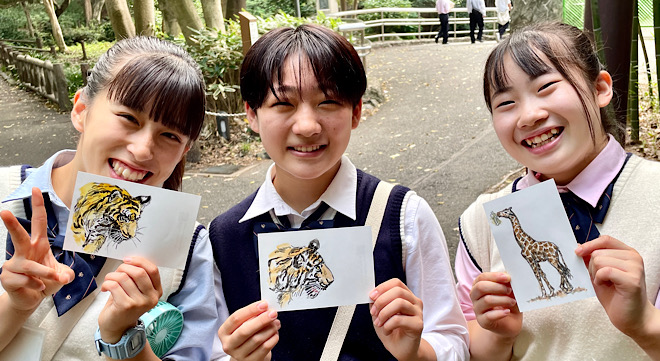
In a group there is usually at least one student who is uninhibited and quick to start a conversation which breaks the ice for all of them -- and the fun begins.
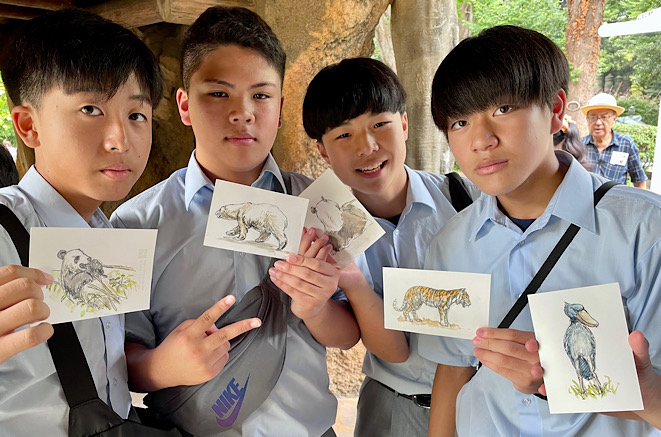
After many years of teaching this age group in Tokyo, I missed them after I retired.
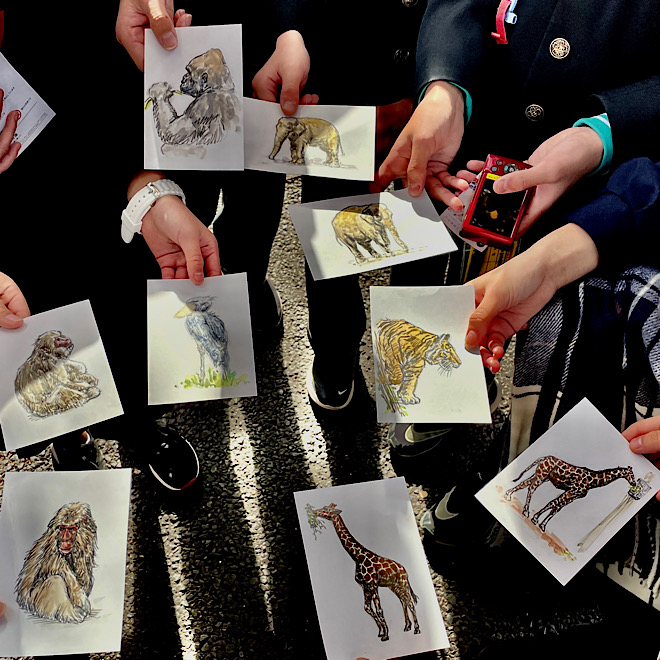
So this made my zoo sketching experience so much more rewarding than even subway sketching.
Learning from Animal Figurines
From the beginning I knew that I needed to get familiar with animal anatomy.
One big problem is that they are constantly moving -- except for hot summer days when the elephant stays motionless for a long time.
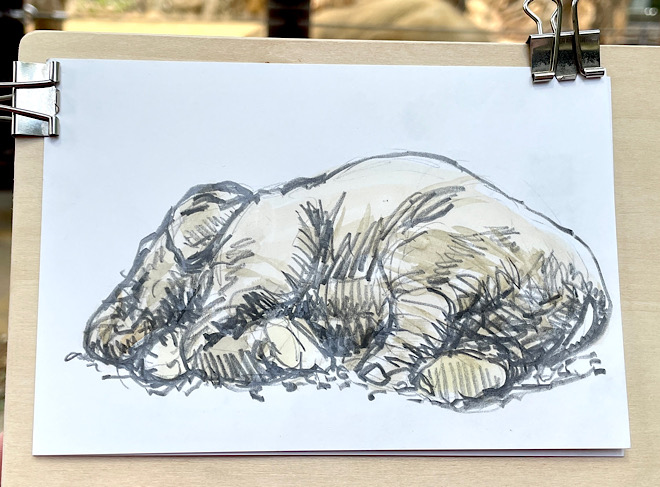
So I went to the zoo shop and bought a bunch of animal figurines so I could practice drawing animals that don't move.
These are incredibly detailed and were made by a German company called Schleich.
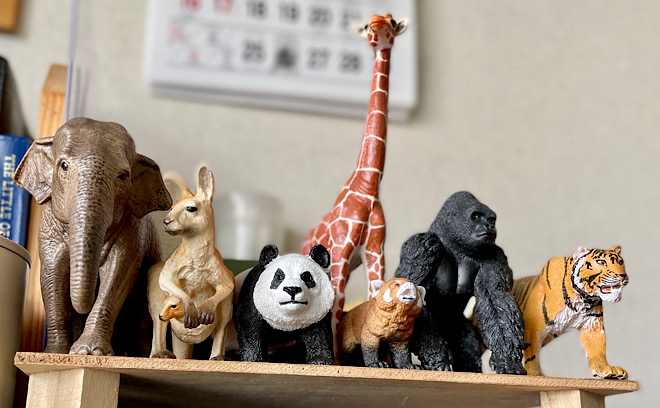
I could pick them up and study them from different angles, and even run my fingers over the contours to find subtle bumps and angles.
The tiger has become my favorite animal because it is so beautiful, but it is also the biggest challenge for me to draw.
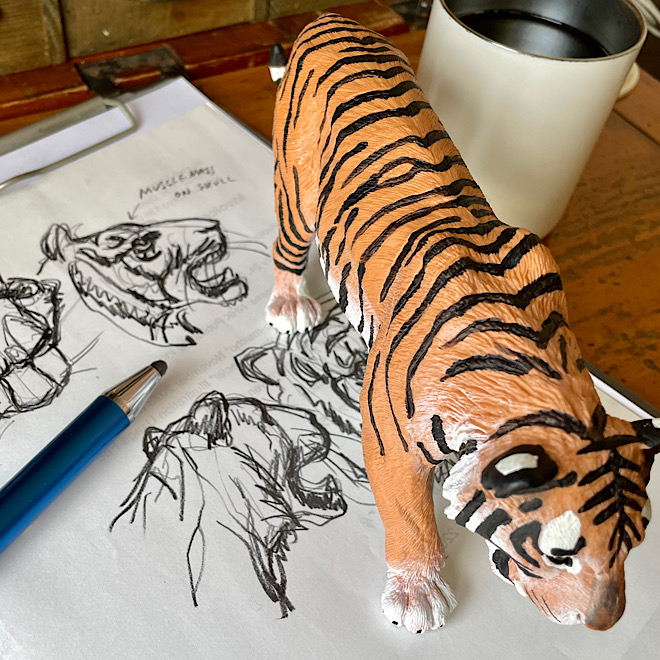
To my happy surprise the zoo shop had a larger tiger figure which was made by Safari Ltd., and it has been a big help.
It also looks so cool on my bookshelf.
They have a section on sketching at the zoo where it talks about the "cage habits" of zoo animals as they repeat the same motions again and again.
So you only have to wait until the animal returns to the same pose, and add to the sketch.
They also encourage you to have more than one sketch going at the same time so that you don't have to wait as long for the animal to return to the same position.
I tried it with this polar bear, and each time it passed through a certain pose I had less than a second to begin to block in the pose or capture some element such as an ear or foot, and I had another sketch going for when he walked back in the other direction.
This method actually works very well if you have the patience to stand there for a long time and wait through many cycles.
Of course, if I had a better knowledge of polar bear anatomy, I could fill in a lot of details without waiting for the bear to return to the same pose.
Yeah, my personal zoo keeps growing.
Learning from Experts on the Web
Although I was discovering a lot about animal anatomy from my animal figurines, I wanted to supplement that with materials from experts, and I hoped to find such materials for free or very cheap.
A web search turned up entire animal anatomy books for free in PDF form:
An Atlas of Animal Anatomy for Artists (1949)
By W. Ellenberger, H. Baum and H. Dittrich
The Art of Animal Drawing (1951)
by Ken Hultgren
These are fairly old publications, but animal anatomy is not exactly a new topic, right?
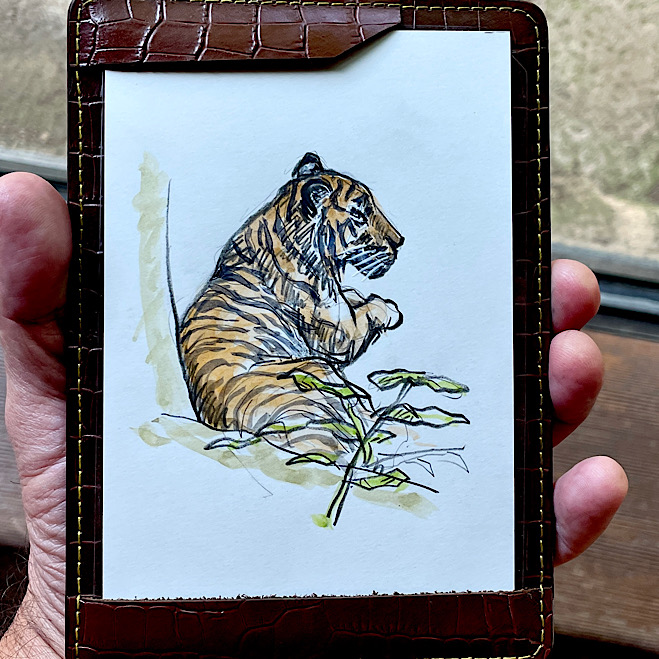
I also discovered valuable YouTube instructional videos by Aaron Blaise.
He drives home the necessity of studying animal anatomy before one attempts to sketch at the zoo, and gives valuable instruction on anatomy and zoo sketching in general.
One valuable practical tip I learned was to carefully observe the animal for a long while and decide on a pose that has a clear sillouette of the animal. Then make a mental snapshot by quickly looking away from the animal while the image is still in your mind.
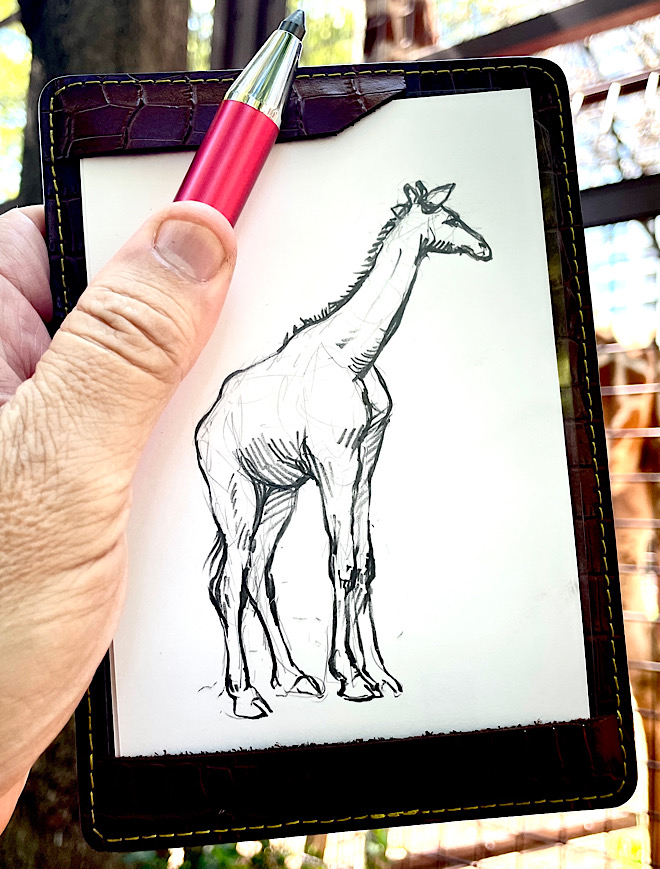
Then you quickly sketch that pose on paper and add details as the animal continues to move around.
You also supply missing information from your memory of anatomical studies.
He also emphasized blocking in proportions and drawing light construction lines so that things would align properly and be in correct perspective.
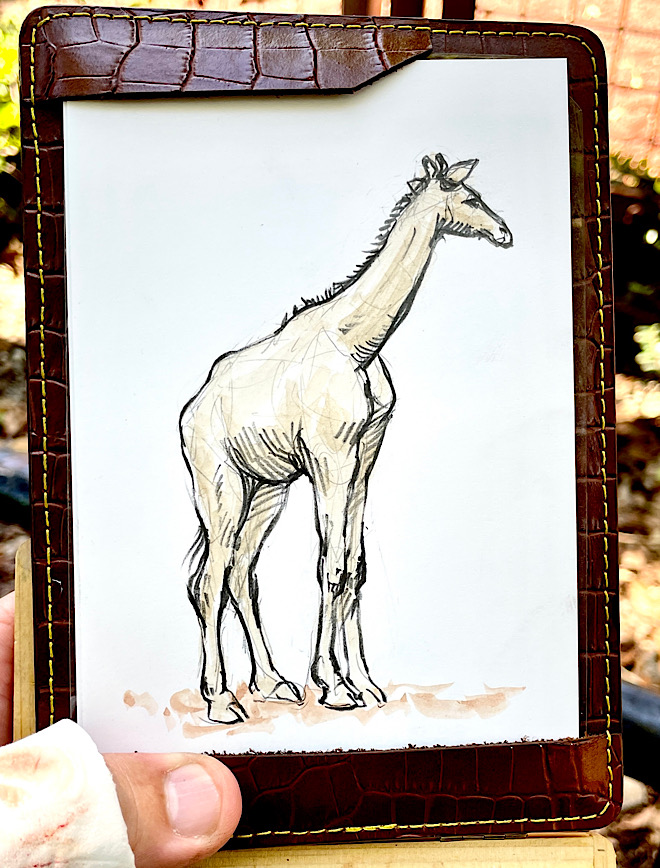
I had avoided drawing construction lines since my art school days when one art instructor noticed I had made a dividing line at the wrist and remarked that I had apparently learned to draw from books.
But this time I tried to use construction lines, and it made a big difference in my sketch (and I later erased those lines).
Aaron Blaise also recommended using watercolor because it can do a lot of the work for you. This was a very welcome idea because I like to use watercolor in my sketches.
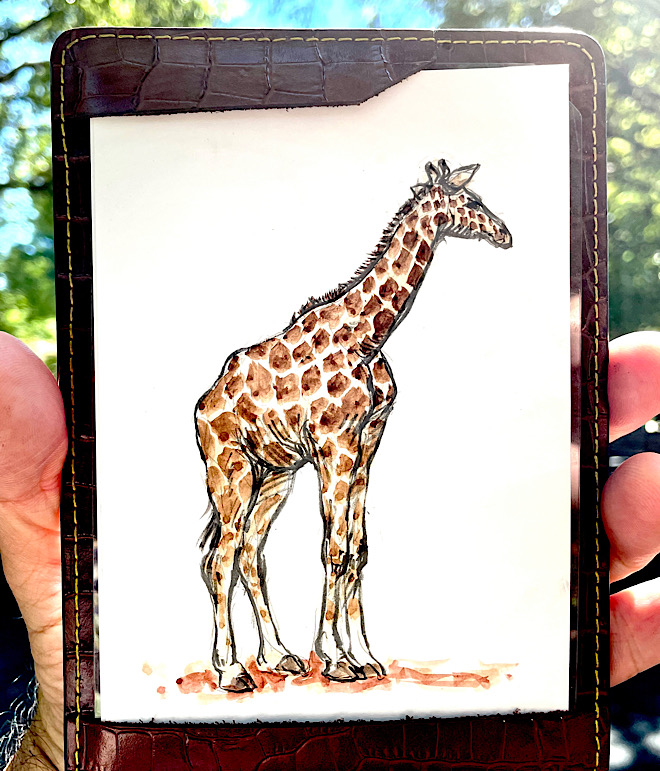
But I have to be careful not to be so enamored with the colorful animals that I fail to do justice to the underlying structure and contours.
So I've started adding the colors and patterns last, even though it makes for a very strange image until the last minute.
Standing and Sketching Small
As mentioned above, I have fun interacting with people who come to Ueno Zoo.
They are often visitors from all around Japan as well as other countries, so I can usually converse with them either in Japanese or English.
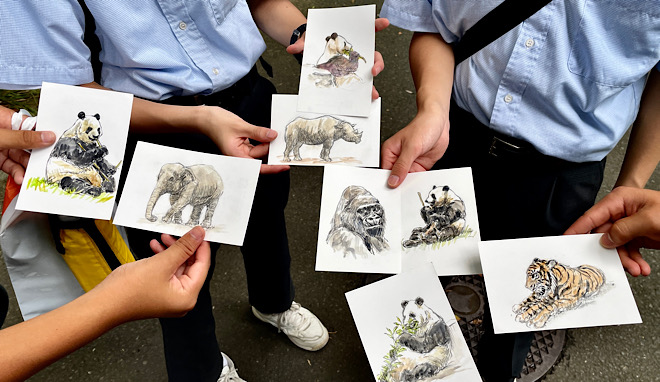
And I am happy to give them my sketches which become souvenirs of their visit to Tokyo.
This is possible because I sketch on inexpensive cards for versatility and freedom (especially the freedom to fail).
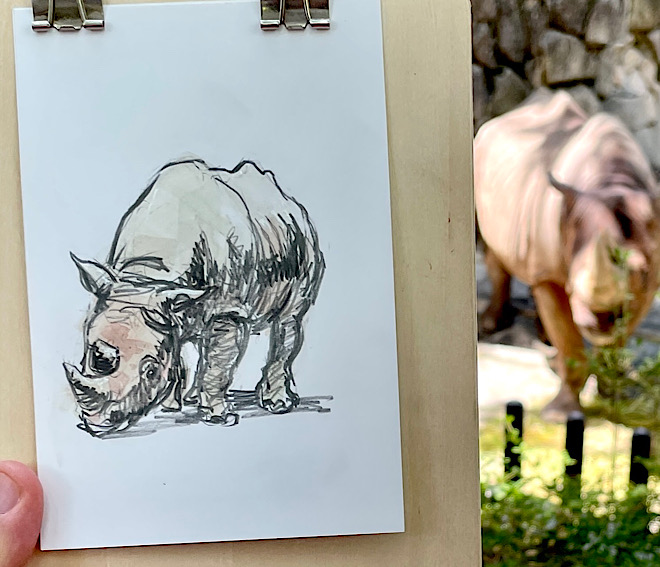
I used to sketch in large sketchbooks while sitting on a stool, but there are many places in crowded Tokyo where that is simply not possible.
So I decided to stand while sketching, and to sketch smaller, even on cards.
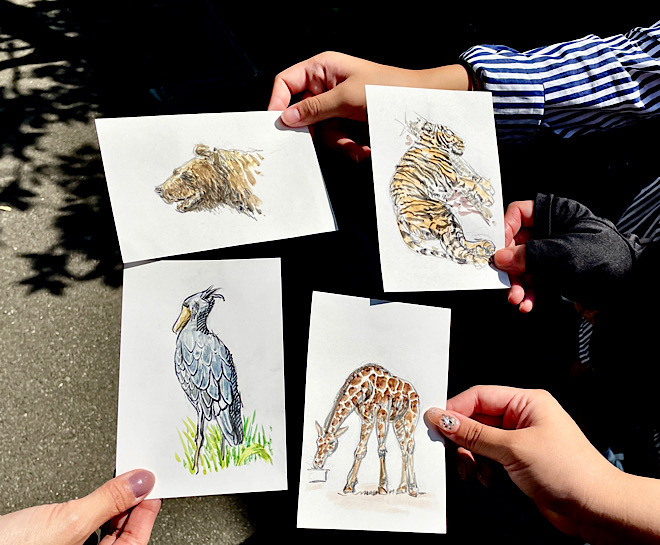
Then I post photos of these and other recent sketches on a special web page.
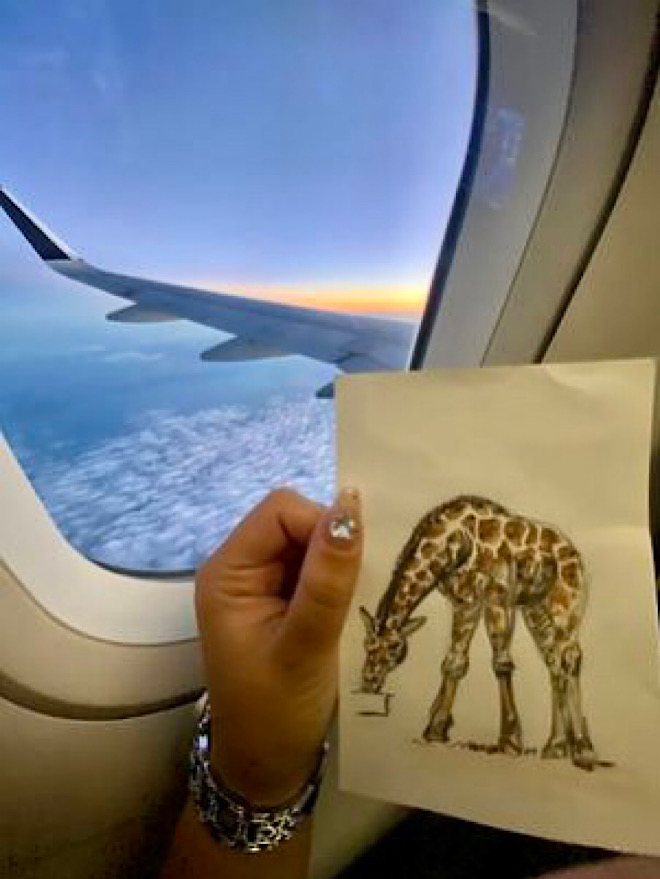 A QR code to my website is printed on the back of each sketch card.
A QR code to my website is printed on the back of each sketch card.
Since I have my Twitter and Instagram links on the website, I've been able to connect with my new zoo friends there as well.
And sometimes these sketches turn up in surprising places on the web.
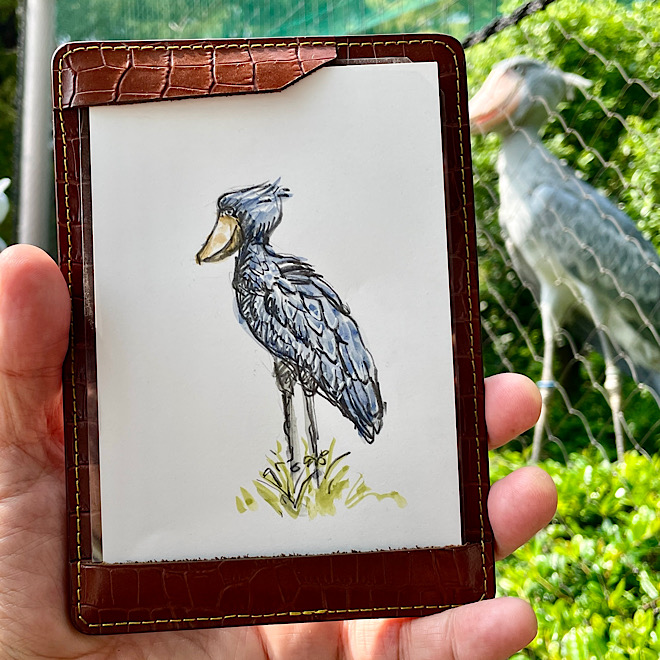
Sketching at the zoo in Tokyo is so rewarding; it has turned out to be a hobby that suits me perfectly.
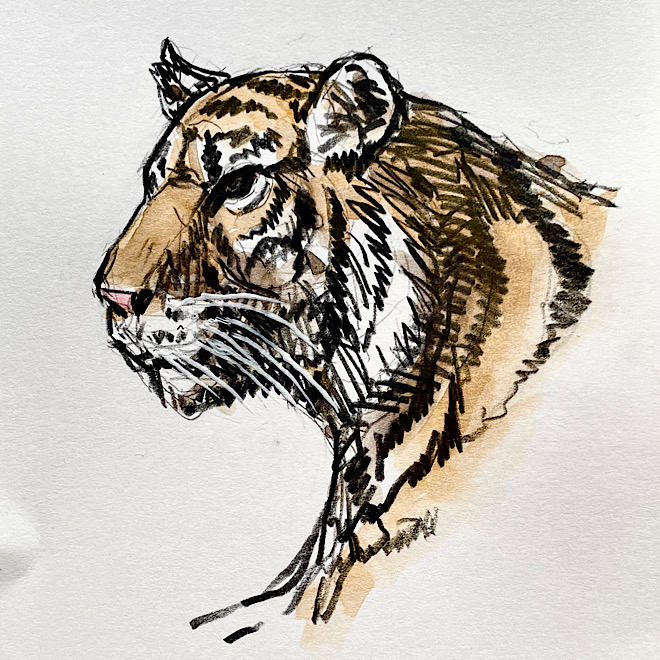
And thanks to the unique challenges of capturing animals, I am able to improve my sketching skills as I wrestle with new ways to do this, and it has a positive effect on all my sketching activity.
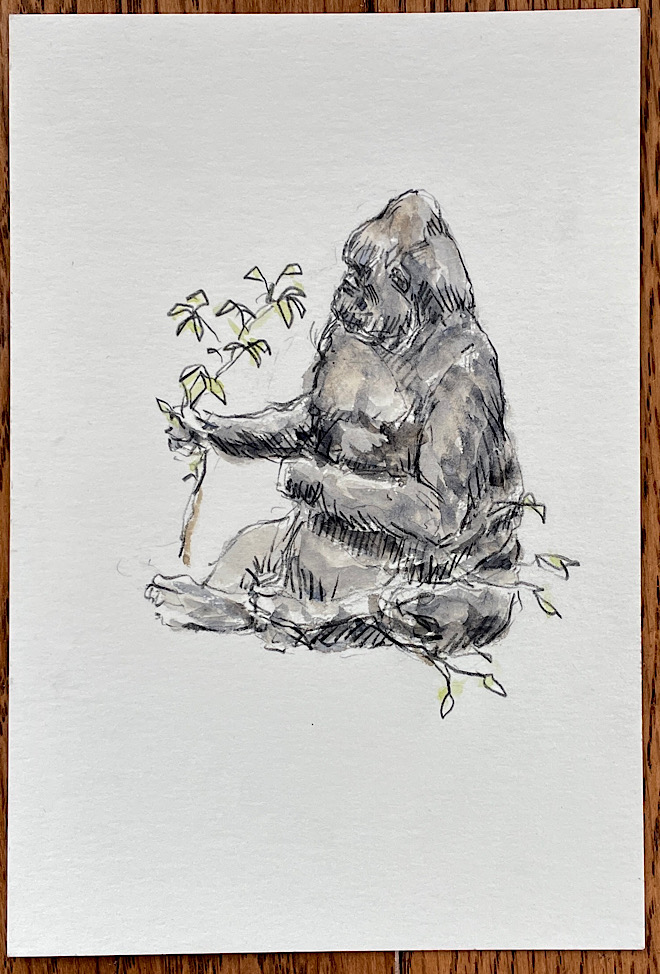
Above is that first gorilla sketch after 14 years, and below is a renewed attempt to sketch the same model after many trips to the zoo.
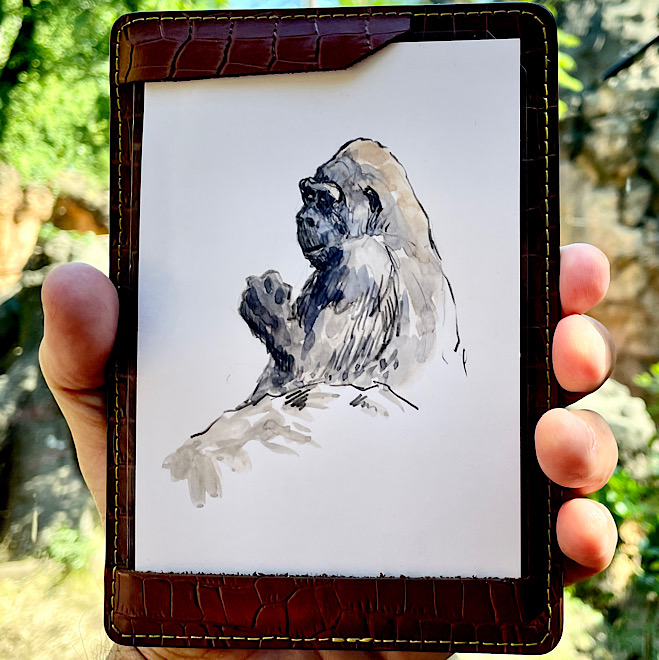
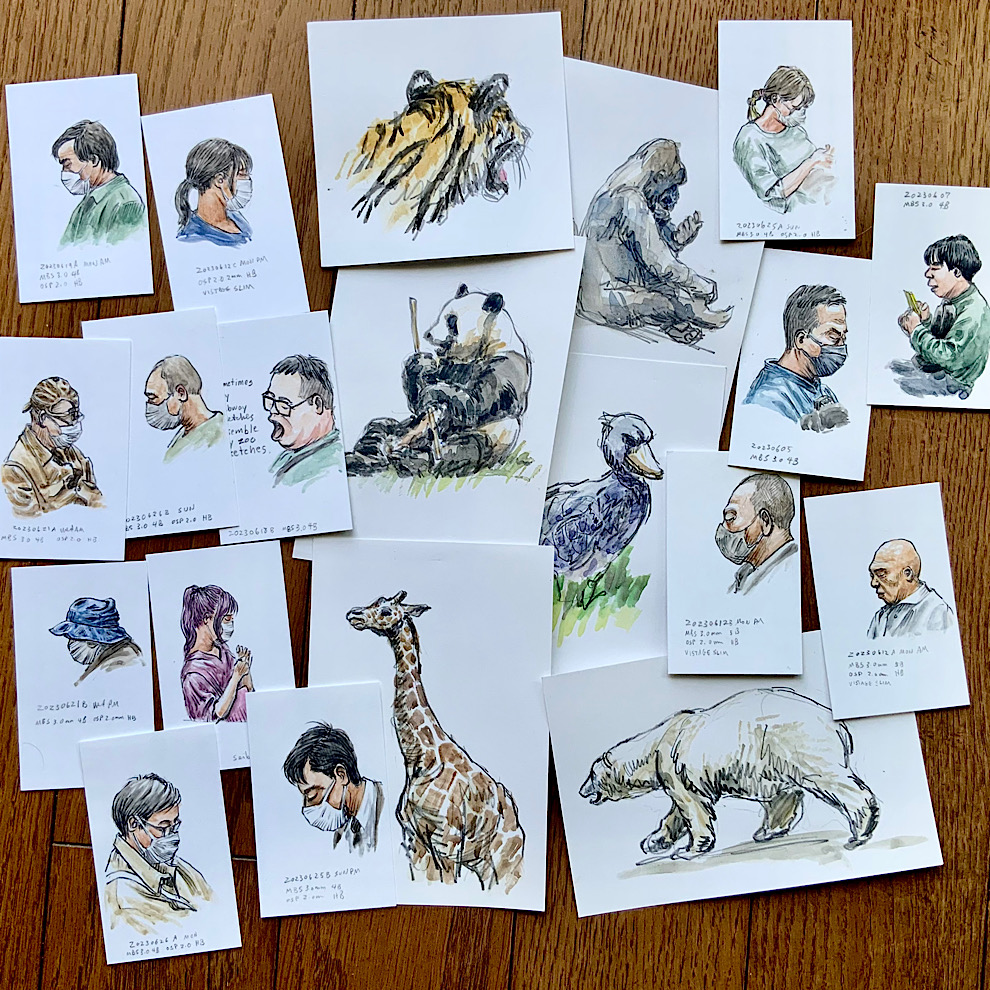
Now I'm sketching people or animals practically every day, and it's amazing that I waited so long to try this.
Note about Amazon links: If you click on a link and buy something at Amazon, a few pennies per dollar goes into my Amazon account, so instead of letting Amazon keep it all, you can pry a few pennies from their fingers make them share it with me. Any other vendor links I may put on this website are just for your convenience.

